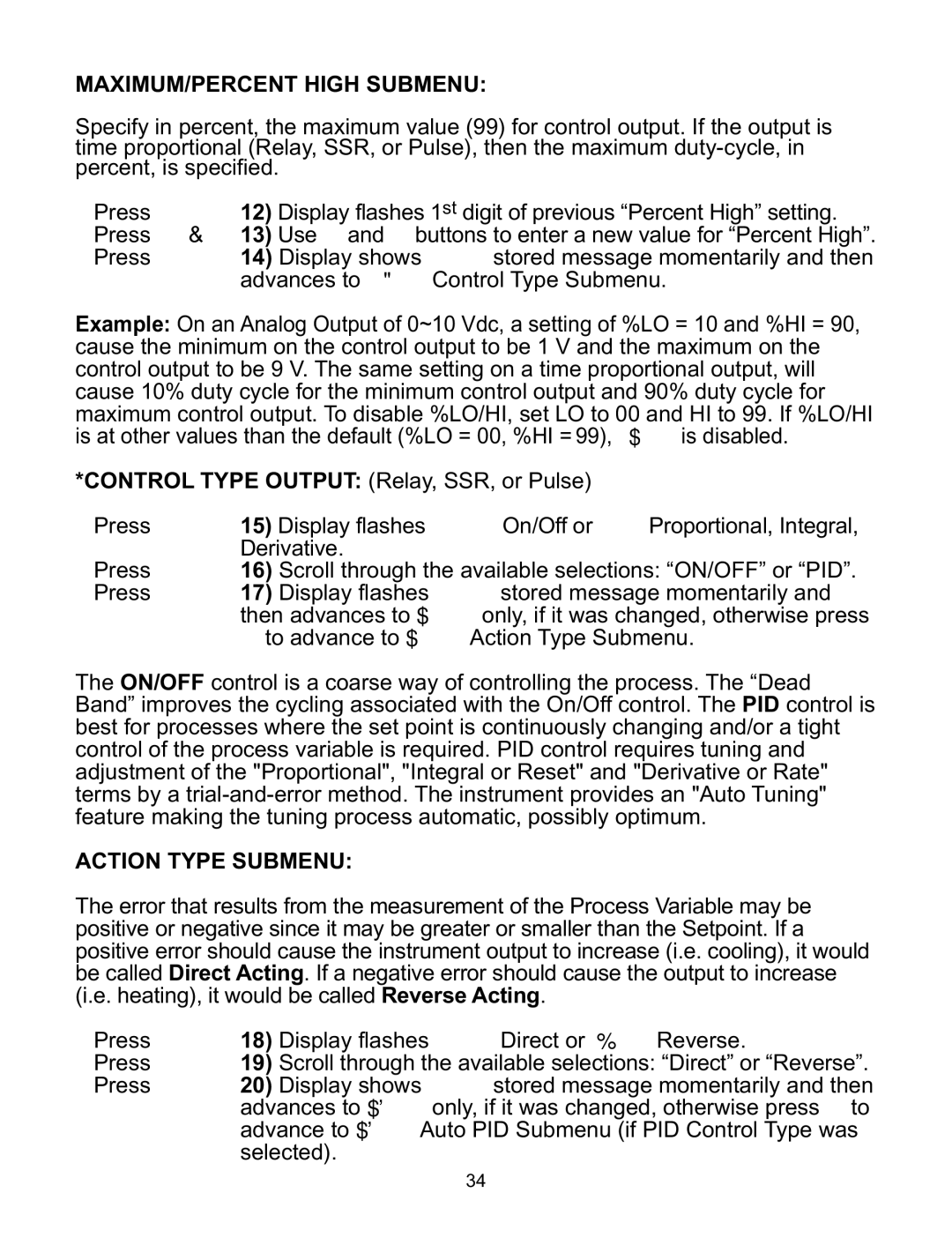MAXIMUM/PERCENT HIGH SUBMENU:
Specify in percent, the maximum value (99) for control output. If the output is time proportional (Relay, SSR, or Pulse), then the maximum
Press d 12) Display flashes 1st digit of previous “Percent High” setting. Press b & c 13) Use b and c buttons to enter a new value for “Percent High”. Press d 14) Display shows STRD stored message momentarily and then
advances to CTRL Control Type Submenu.
Example: On an Analog Output of 0~10 Vdc, a setting of %LO = 10 and %HI = 90, cause the minimum on the control output to be 1 V and the maximum on the control output to be 9 V. The same setting on a time proportional output, will cause 10% duty cycle for the minimum control output and 90% duty cycle for maximum control output. To disable %LO/HI, set LO to 00 and HI to 99. If %LO/HI is at other values than the default (%LO = 00, %HI = 99), SOAK is disabled.
*CONTROL TYPE OUTPUT: (Relay, SSR, or Pulse)
Press d 15) Display flashes ON.OF On/Off or PID Proportional, Integral, Derivative.
Press b 16) Scroll through the available selections: “ON/OFF” or “PID”. Press d 17) Display flashes STRD stored message momentarily and
then advances to AçTN only, if it was changed, otherwise press a to advance to AçTN Action Type Submenu.
The ON/OFF control is a coarse way of controlling the process. The “Dead Band” improves the cycling associated with the On/Off control. The PID control is best for processes where the set point is continuously changing and/or a tight control of the process variable is required. PID control requires tuning and adjustment of the "Proportional", "Integral or Reset" and "Derivative or Rate" terms by a
ACTION TYPE SUBMENU:
The error that results from the measurement of the Process Variable may be positive or negative since it may be greater or smaller than the Setpoint. If a positive error should cause the instrument output to increase (i.e. cooling), it would be called Direct Acting. If a negative error should cause the output to increase (i.e. heating), it would be called Reverse Acting.
Press | d | 18) | Display flashes DRçT Direct or RVRS Reverse. |
Press | b | 19) | Scroll through the available selections: “Direct” or “Reverse”. |
Press d | 20) | Display shows STRD stored message momentarily and then | |
advances to AUTo only, if it was changed, otherwise press a to advance to AUTo Auto PID Submenu (if PID Control Type was selected).
34
